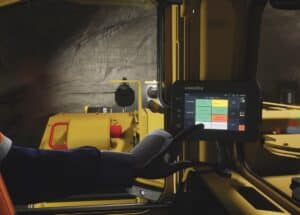With idle time a significant hidden cost in underground mines, MST Global has pioneered a solution.
Deep underground, a bolter sits idle as workers wait for the next mining task to begin, with delays upstream pushing back the schedule.
For 30 minutes nothing happens; multiply that pause across shifts, machines and sites, and the cost to productivity and profitability quickly becomes clear.
To understand the scale of this challenge and how new digital tools are tackling it, Australian Mining spoke with MST Global about the company’s HELIX Dispatch platform.
“A face sitting idle for 30 minutes might seem minor, but it becomes a real opportunity cost when idle time becomes a habit,” MST Global general manager – product management and marketing Jason Hartley said.
“By stepping back and looking at the cumulative effect across a quarter or year, you’re talking about thousands of lost production hours and millions of dollars in value.”
For much of the industry’s history, idle time was difficult to track in any meaningful way. Operators relied on manual logs, shift notes and production reports, which were often inconsistent and incomplete.
“With digital systems, idle time is now visible in real time, broken down by crews, machines and tasks, making it easier to identify patterns and take action,” Hartley said. “That visibility changes the whole conversation because it turns what was once guesswork into actionable intelligence.”
The true cost of idle time is not always in the minutes lost, but in the ripple effects across an operation.
A loader that sits idle can stall drilling cycles, crews waiting for instructions can hold up development headings, and one delay can cause an entire shift to fall behind.
“HELIX Dispatch turns downtime into data. Once you can see it, you can do something about it,” Hartley said. “It’s about connecting the dots between activities so supervisors know exactly where things are slowing down and can address them before the impact multiplies.”
The HELIX enterprise platform was designed with this in mind. The system draws live data from equipment, personnel and Internet of Things (IoT) devices throughout the mine.
Every stage of the mining cycle can be monitored, from loading and hauling to drilling and bolting, with delays automatically recorded along with the context behind them.
“This means operators don’t just see that a machine was idle, they can see which crew was working, what task they were assigned, and what was happening around them,” Hartley said.
“That level of context is what enables more informed decisions.”
Armed with this information, supervisors can manage schedules dynamically. If a task finishes early, the next crew can be notified straight away. If a piece of equipment runs late, the delay is flagged instantly, allowing dispatchers to adjust plans before the slowdown spreads.

“This level of coordination helps keep the entire shift running smoothly,” Hartley said. “Rather than working off outdated assumptions, crews are always operating with live information that tells them exactly what’s ready and what isn’t.”
For many mines, this represents not just an operational upgrade, but a cultural shift. Historically, idle time was reported at the end of the day, if at all, meaning managers only had the chance to analyse what went wrong after the fact. With HELIX, action can be taken in the moment.
“Managing idle time is about getting more out of the resources you already have,” Hartley said. “You’re not adding new trucks or extra people; you’re simply making the best use of what’s already on site.”
The shift also benefits crews on the ground, who gain confidence from the transparency and responsiveness of the system.
Frustrations caused by waiting in the dark for tasks to begin are replaced with clarity about when to move and why.
“When crews can trust the information they’re getting, the whole workplace becomes more efficient and less stressful,” Hartley said. “It improves morale because people know their time isn’t being wasted.”
Looking forward, the opportunities extend well beyond real-time visibility. As mines become more connected, HELIX Dispatch will evolve towards predictive capabilities.
“As mines become more connected, we will see a move towards predictive operations,” Hartley said. “That’s where the combination of automation, AI and integrated data will allow us to anticipate problems before they happen.”
The goal is to use patterns in the data to forecast idle time and take preventative action. A truck that repeatedly arrives late to a loading point, for example, could trigger an automatic adjustment to scheduling before it disrupts the shift.
“The future is about smarter, more responsive workflows where decisions are driven by live data and coordination is seamless,” Hartley said. “This is where HELIX Dispatch can play a key role.”
The implications for productivity are significant. Downtime carries steep costs in the mining industry, and even small improvements in efficiency can deliver big returns.
“Idle time may be a hidden cost, but it is not an unavoidable one,” Hartley said. “With platforms like HELIX and MST’s mine-ready technologies, operators can now see where time is being lost and take meaningful steps to reduce it.”
In a sector where every minute counts, visibility into idle time has become a game-changer, enabling mines to produce more, waste less and operate with a level of agility that was never possible before.
This feature appeared in the October issue of Australian Mining magazine.


